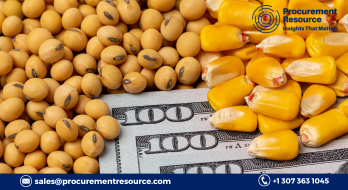US Soybean Exports to China Surge Ahead of Election as Demand Spiked

U.S. soybean export premiums have recently hit their highest in over a year, as grain exporters work quickly to ship the large American harvest overseas. With the upcoming presidential election raising the possibility of changes in trade policy, nearly 2.5 million metric tons of soybeans were inspected for export, with 1.7 million tons going to China—the most in a year, according to USDA data.
This increase in export premiums signals strong demand for U.S. soybeans right now, particularly from China. Buyers appear eager to secure supplies ahead of possible trade policy shifts that could affect costs and availability. Exporters are taking advantage of this demand by charging higher prices, as Chinese importers, worried about potential tariffs or trade restrictions, are prioritizing shipments from the U.S.
While this uptick in export activity is providing temporary relief for American farmers facing low prices and high stockpiles, sellers indicate that this strong demand may be short-lived. Concerns are growing that, after January, demand could sharply decline, leaving the U.S. with excess soybean supplies. This hesitancy is tied to potential tariff policies that could arise under a new U.S. administration. During Donald Trump’s campaign, his proposed tariffs on Chinese imports led some Chinese buyers to reduce U.S. purchases starting in January, anticipating price hikes or supply issues. Traders noted this shift as importers diversified suppliers, preparing for potential trade policy changes if Trump took office. Therefore, some Chinese importers are opting to source soybeans from Brazil instead.
Read More About Soybean Production Cost Reports - Get Free Sample Copy in PDF
Chinese buyers, uncertain about potential cost increases tied to tariffs, are securing Brazilian soybeans at a higher price, shifting to alternative suppliers earlier in the season than usual. The current USDA forecast suggests that U.S. soybean exports could fall by 75 million bushels in the 2024/25 season, underscoring the impact of this shift. Trade analysts observe that while both U.S. presidential candidates may maintain tariffs, the extent could vary significantly, with a more pronounced tariff increase anticipated under a Trump administration compared to Kamala Harris’s approach, which may involve sustaining current tariff levels.
In the meantime, premiums on immediate U.S. soybean shipments are likely to ease as initial demand is met, and uncertainties surrounding a potential trade conflict temper new orders from China. Spot prices for soybean barges at Gulf export terminals have risen sharply, yet offers for soybeans loaded in the coming month are already lower, reflecting softening premiums as demand subsides.




